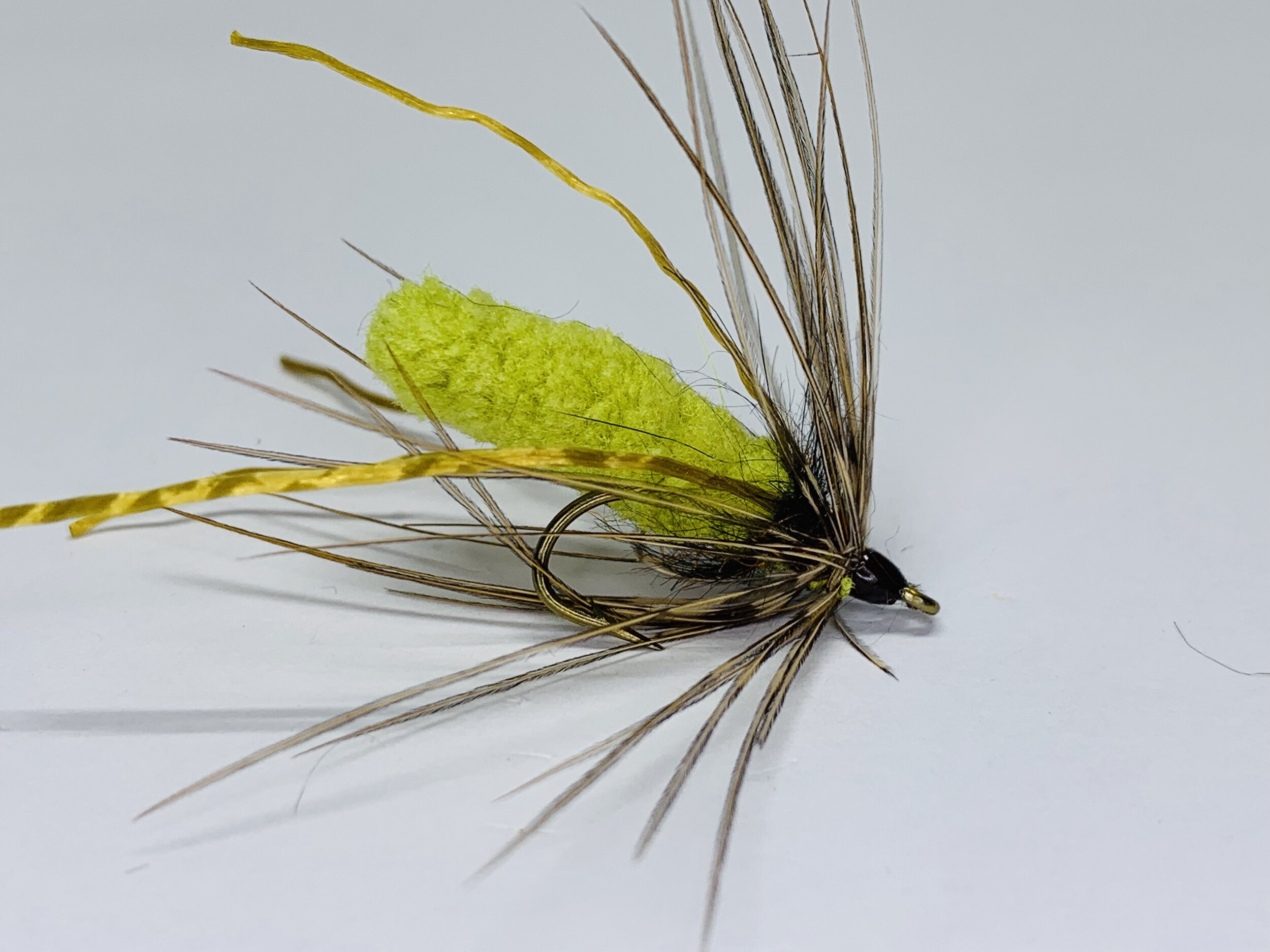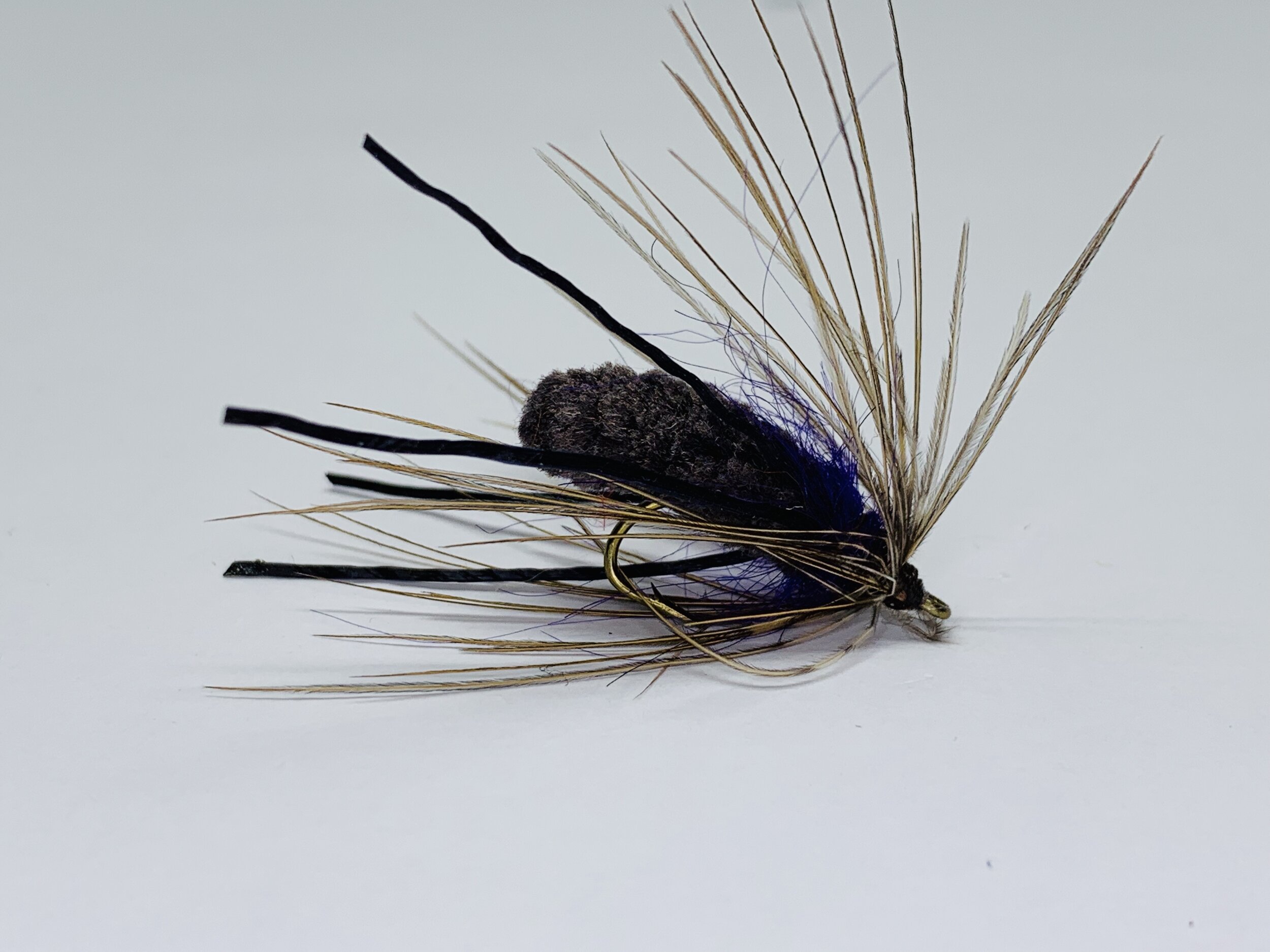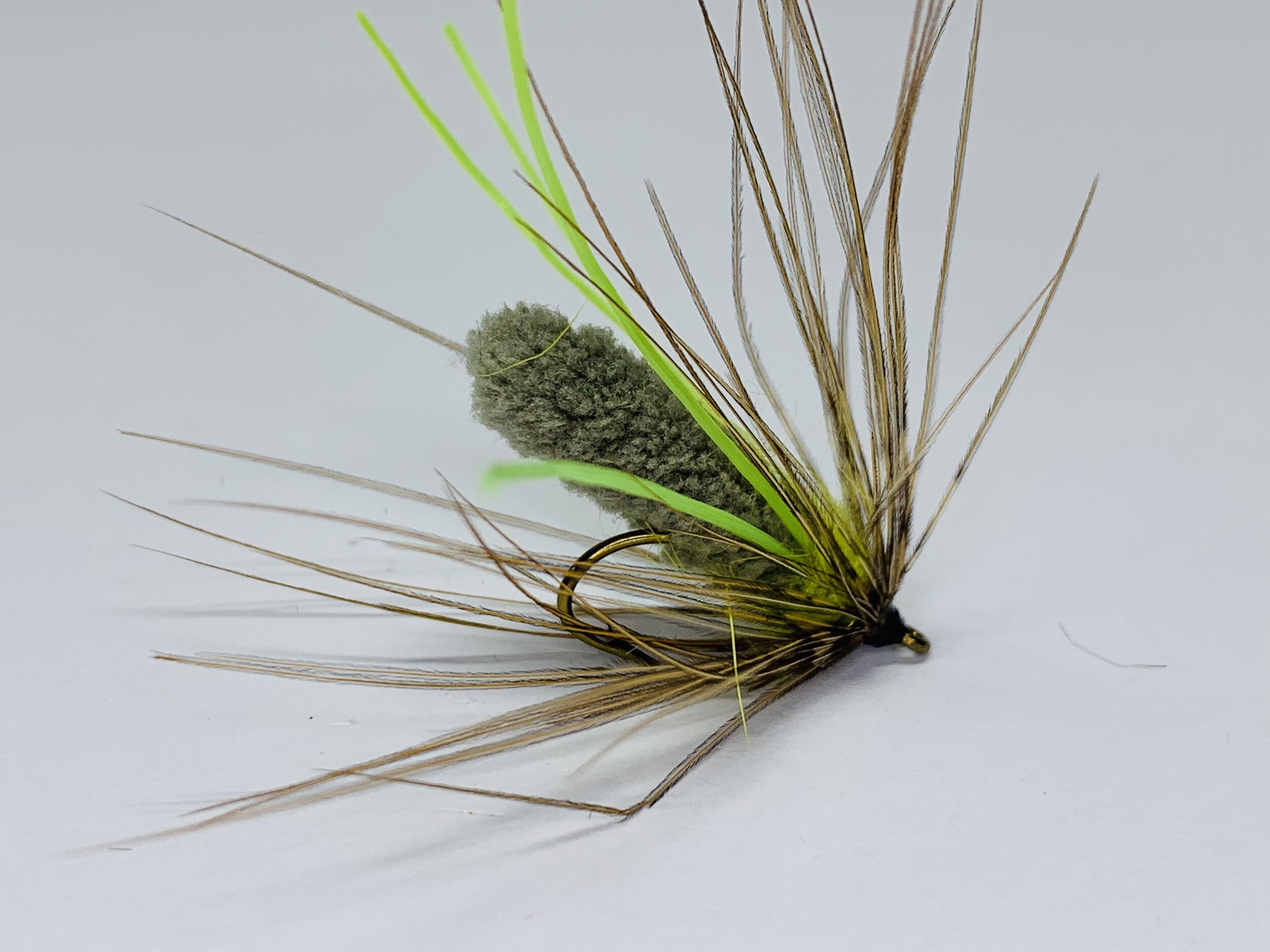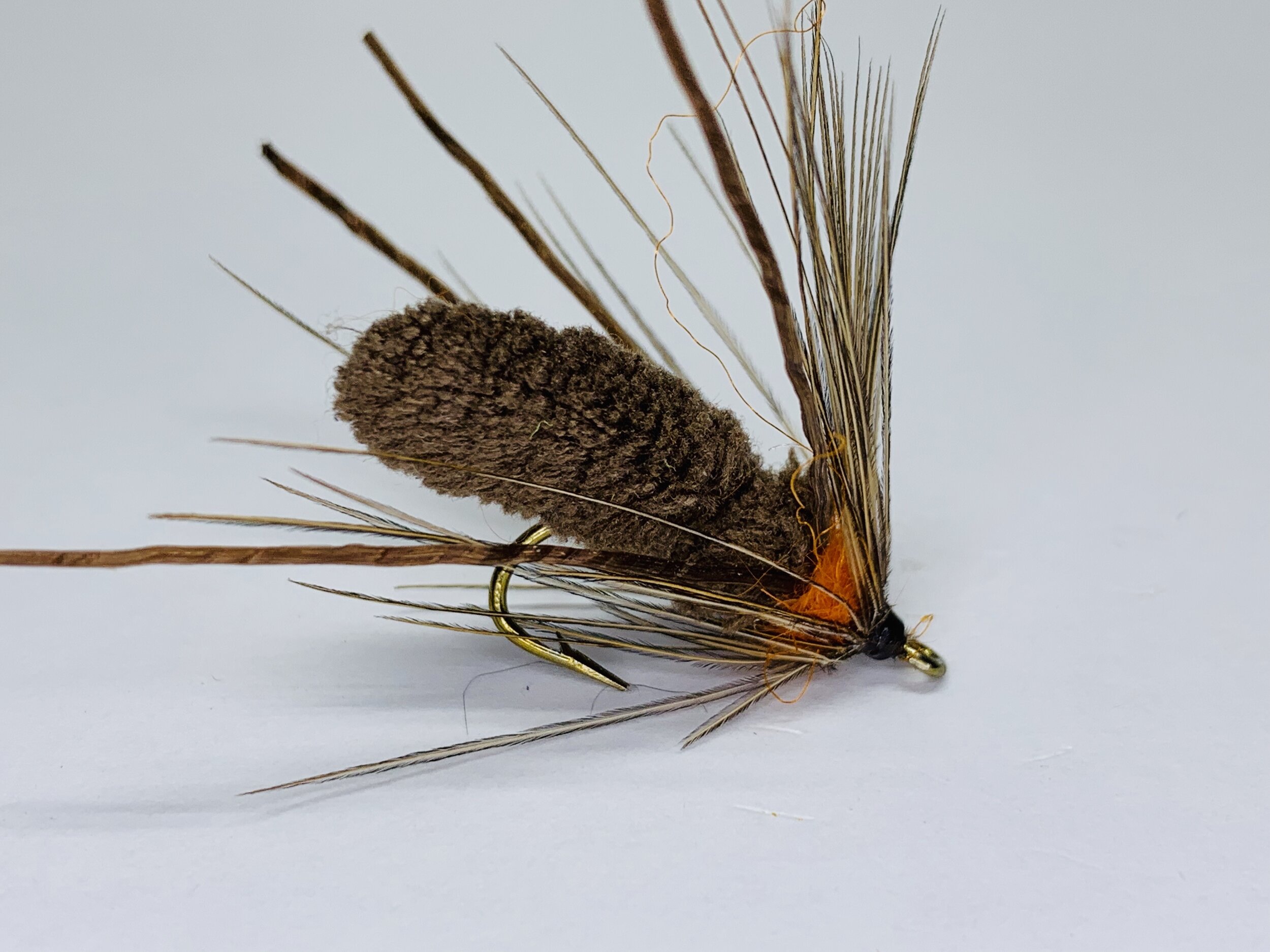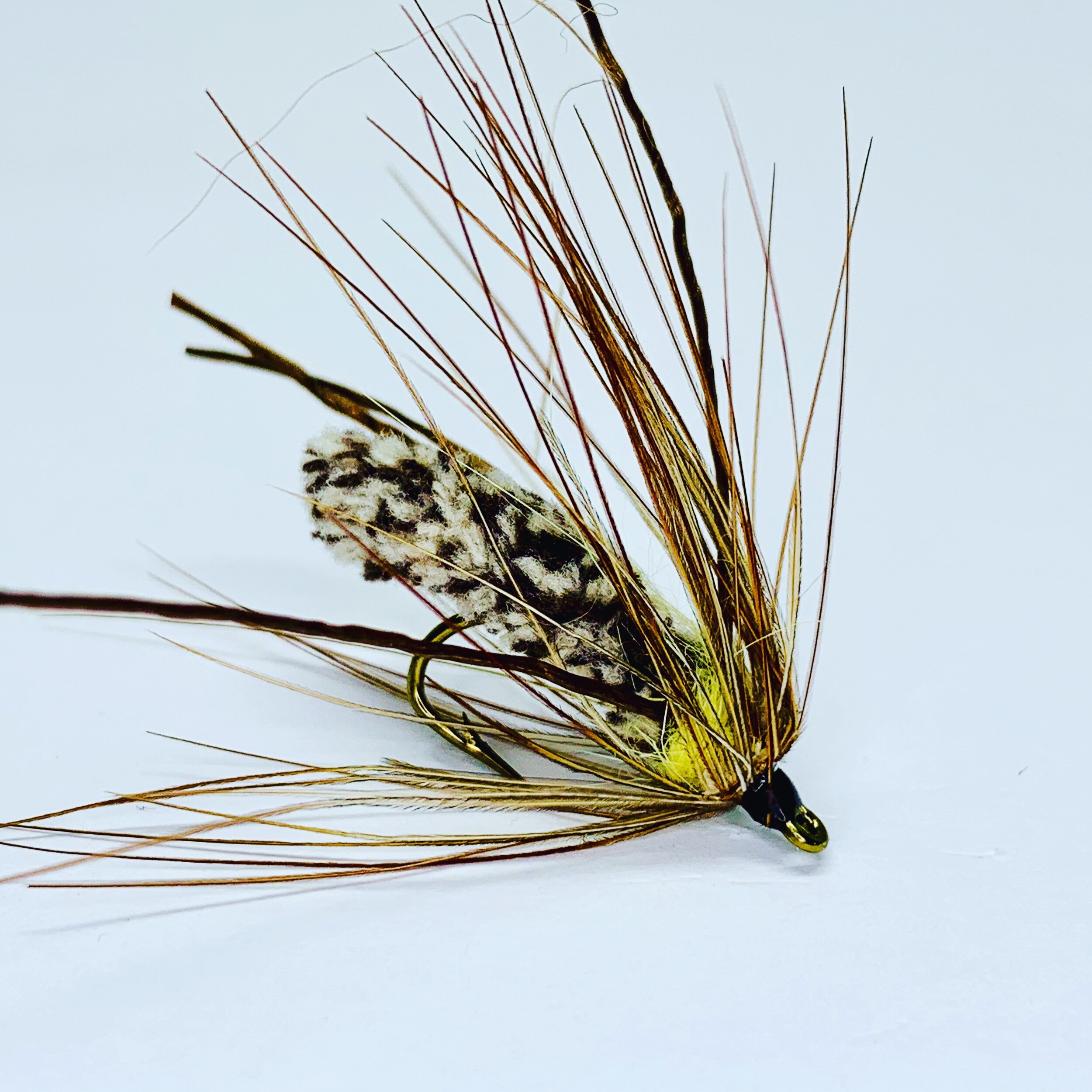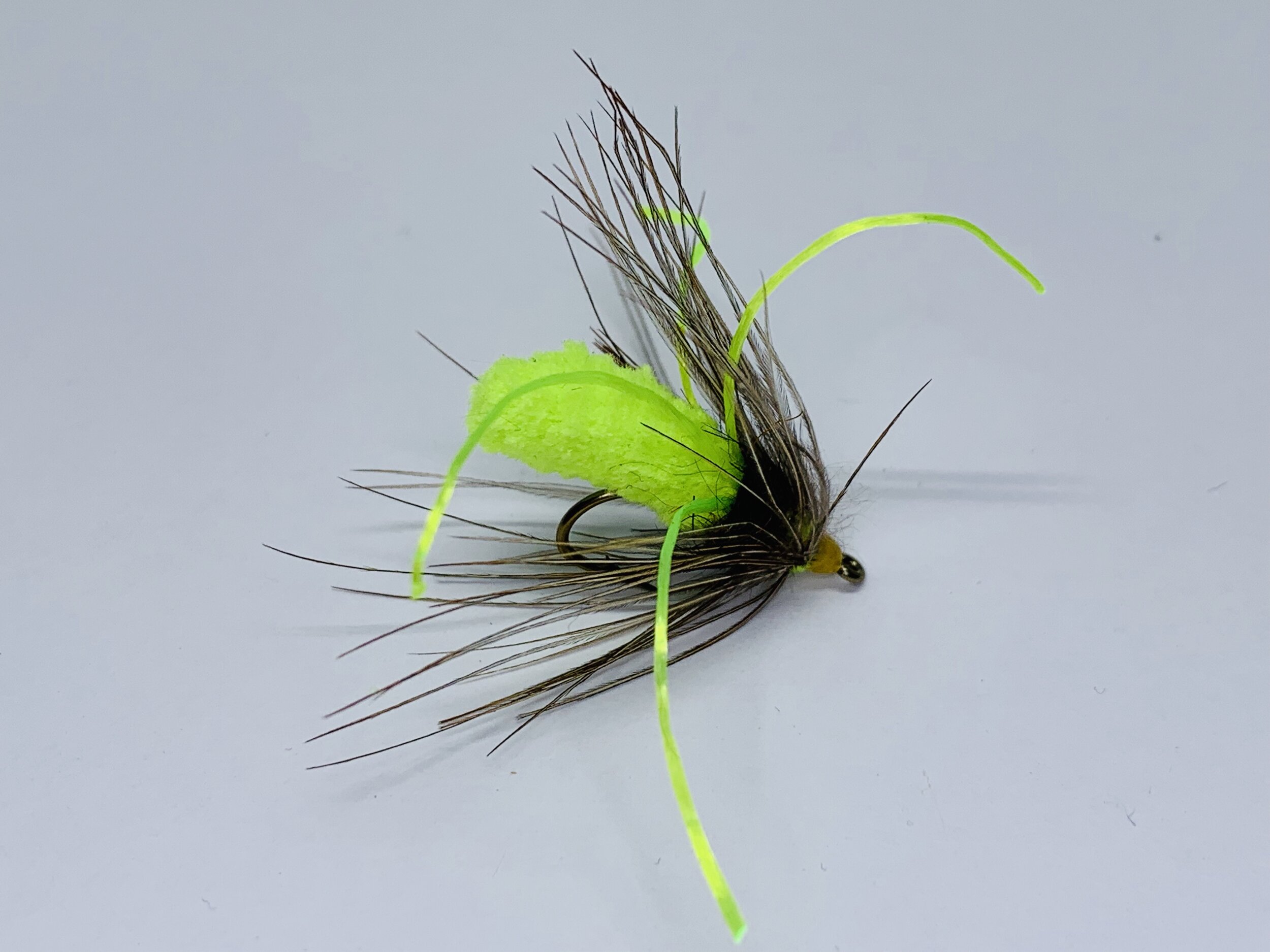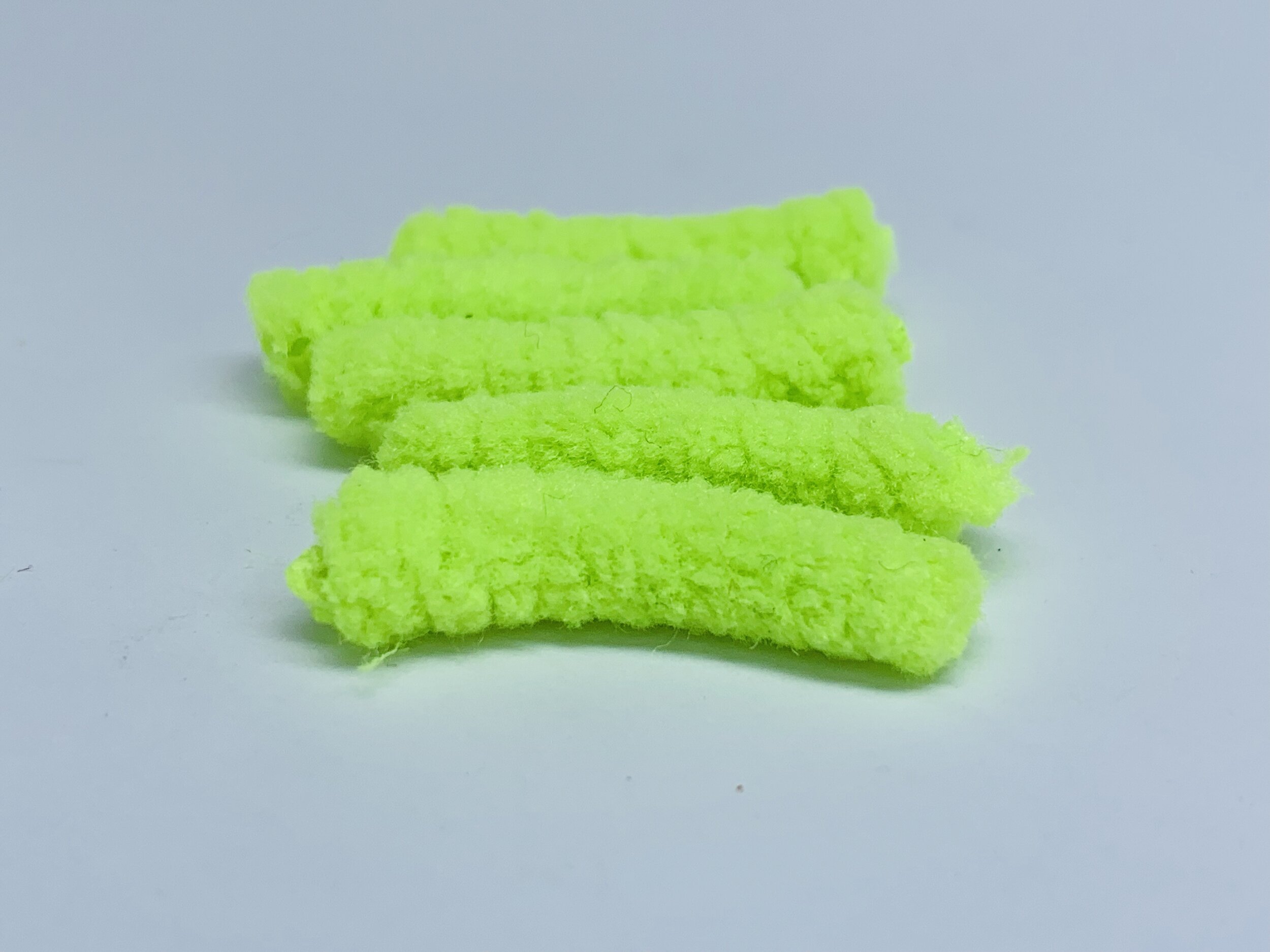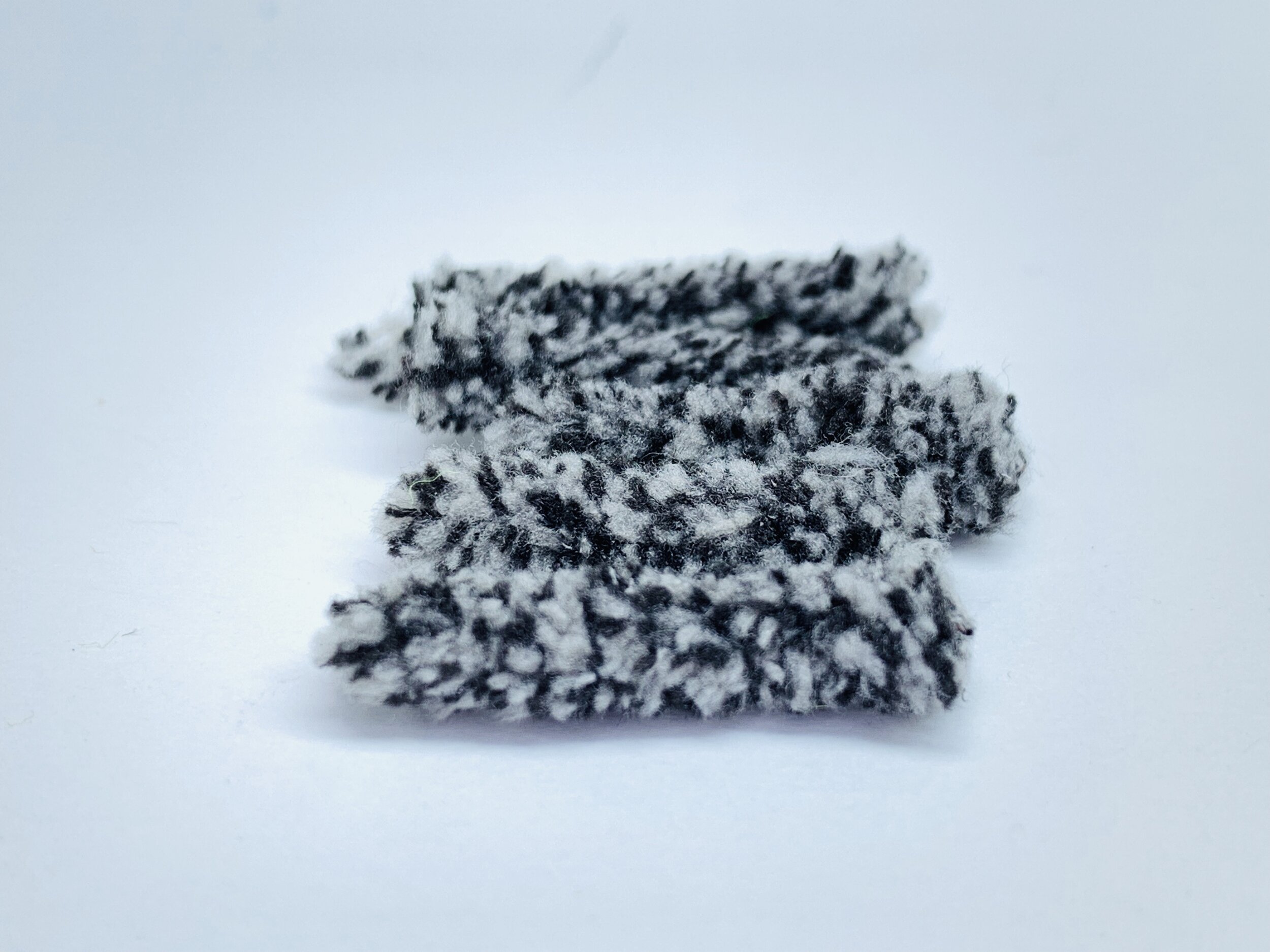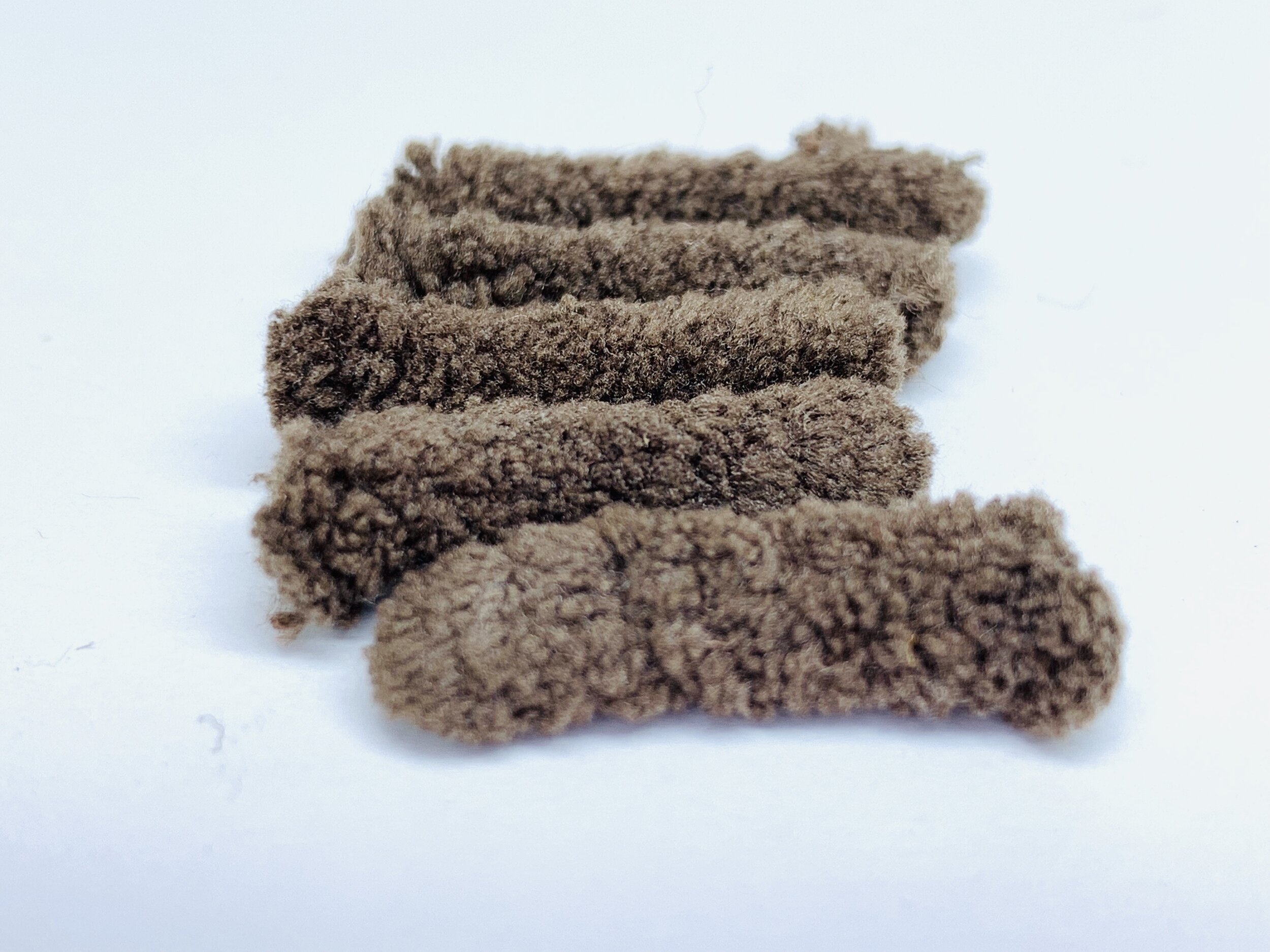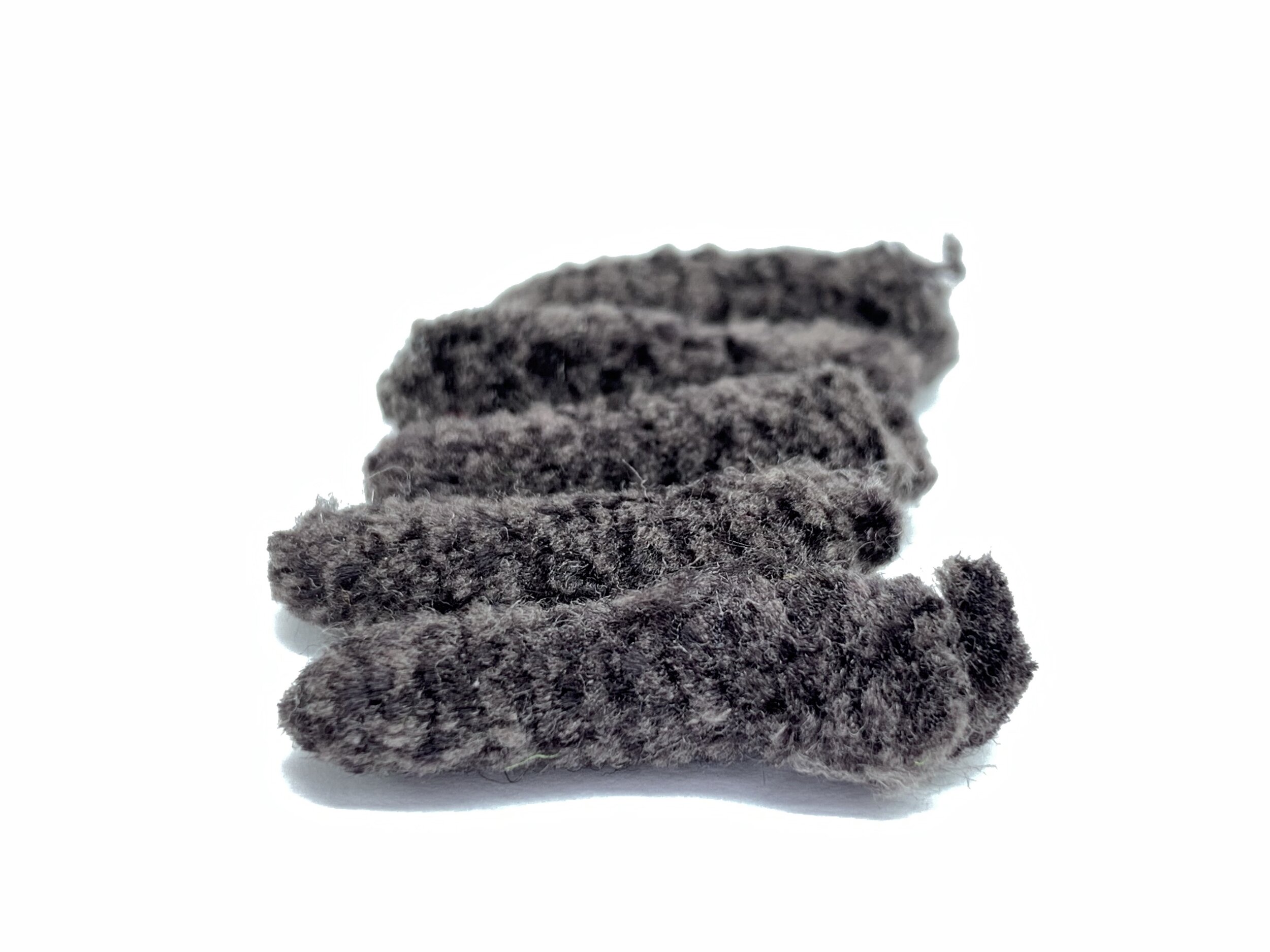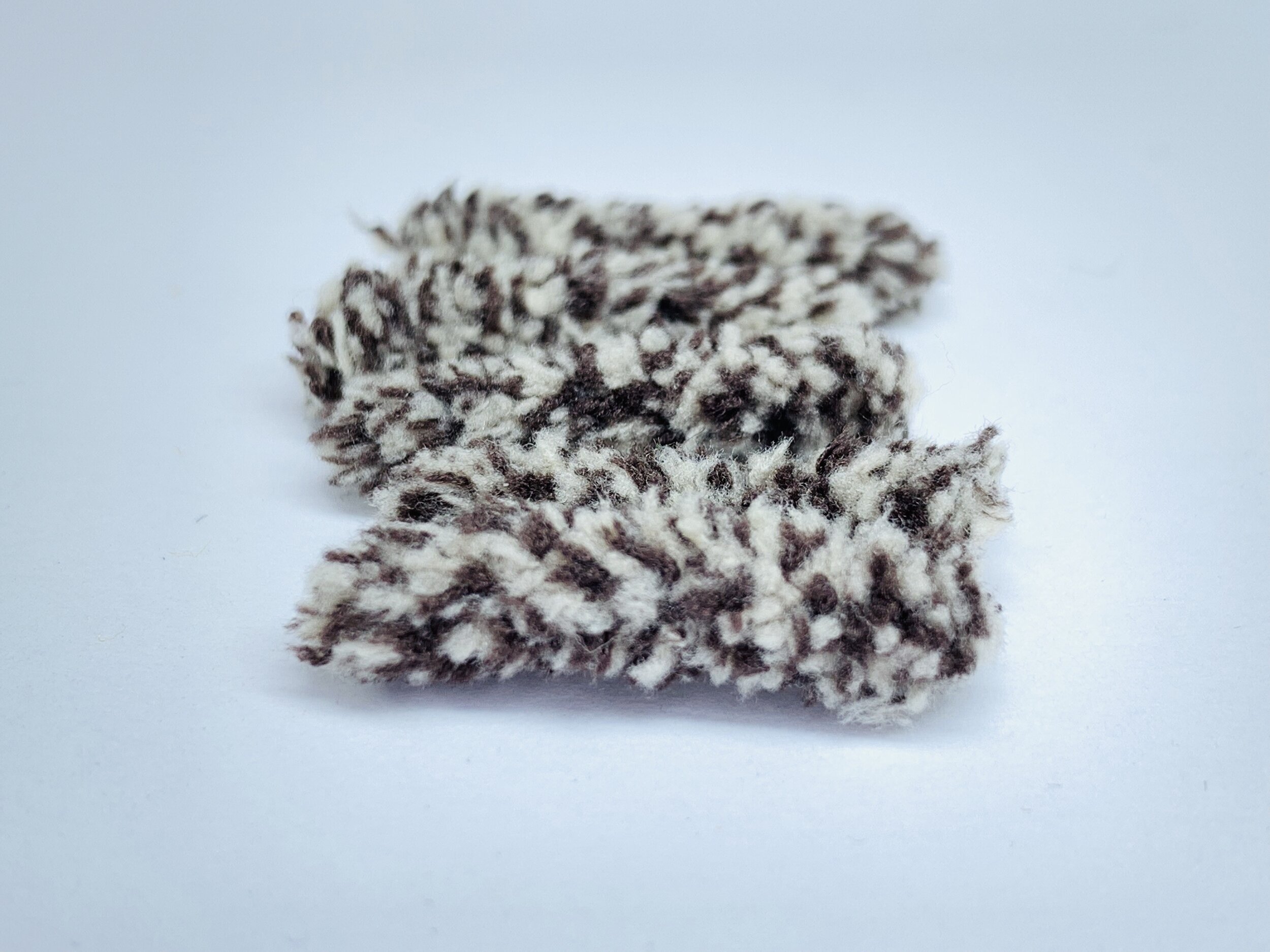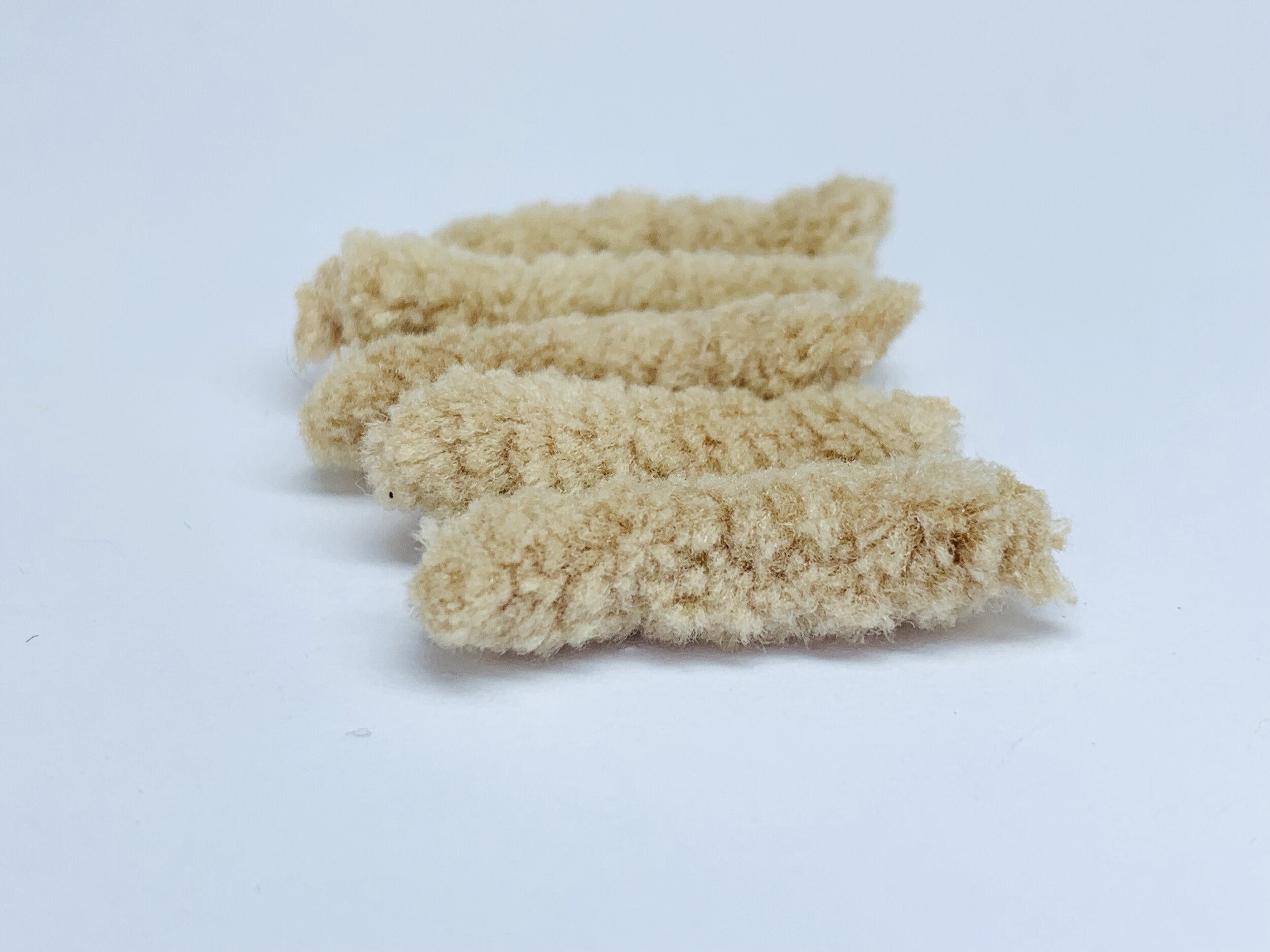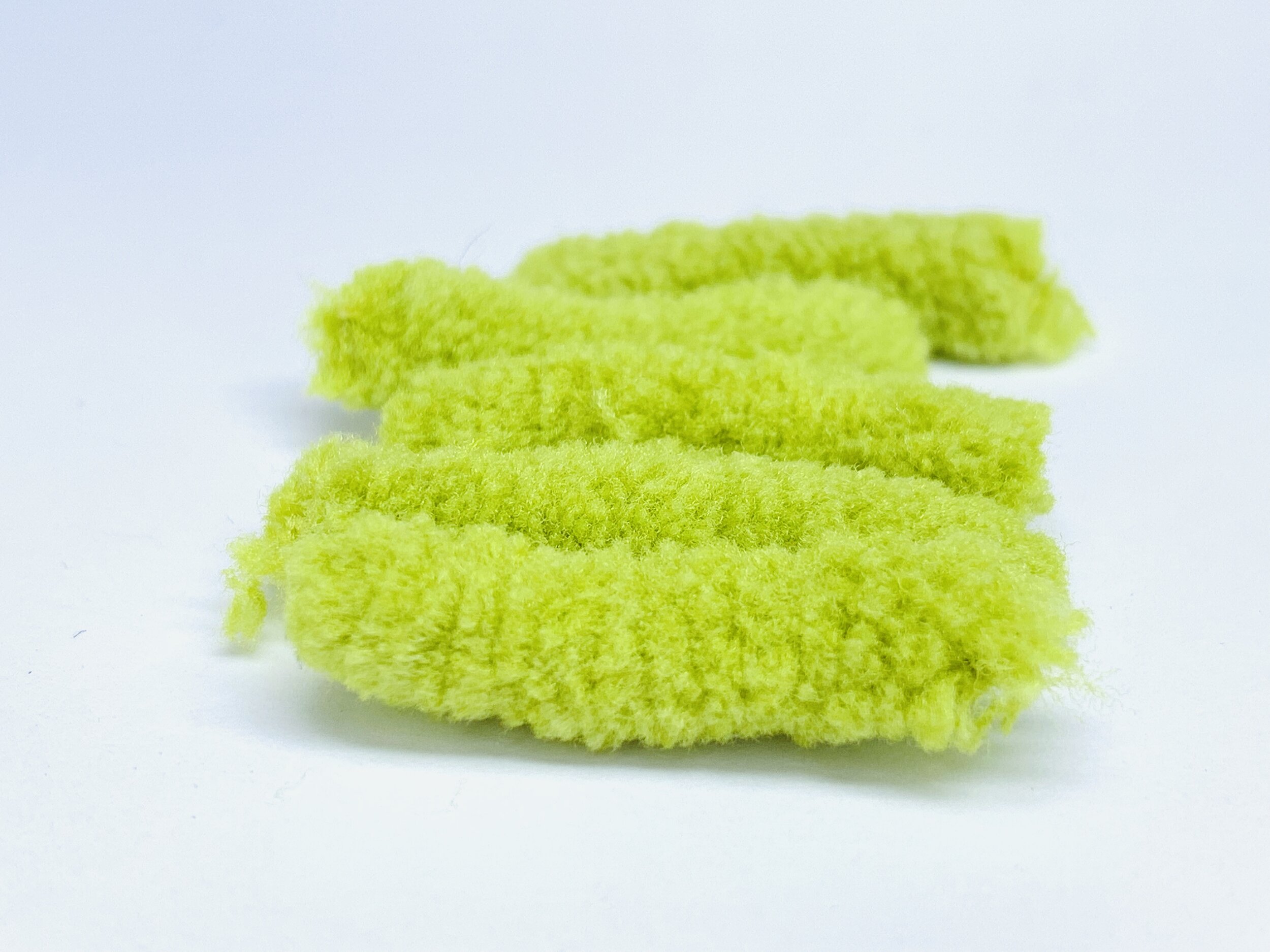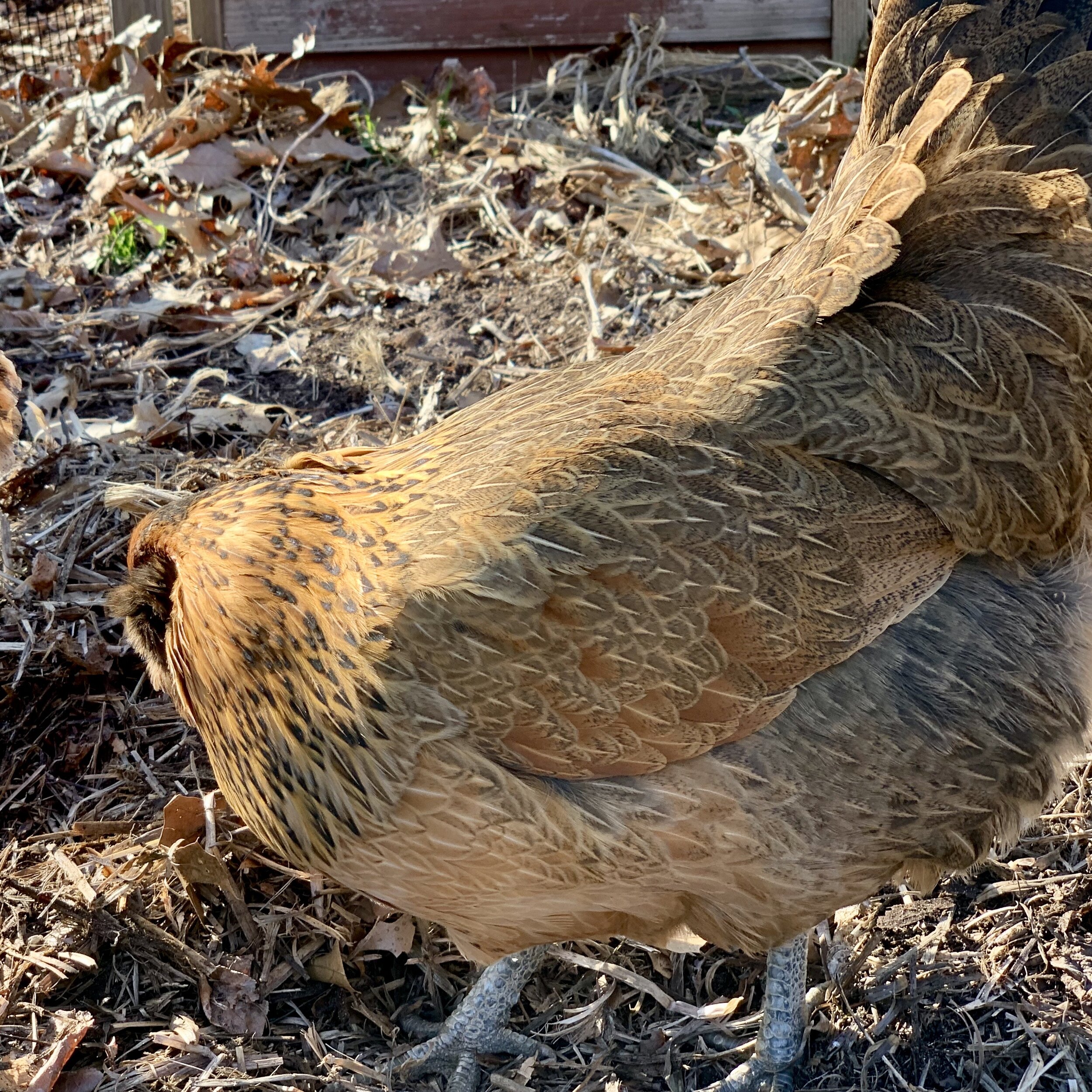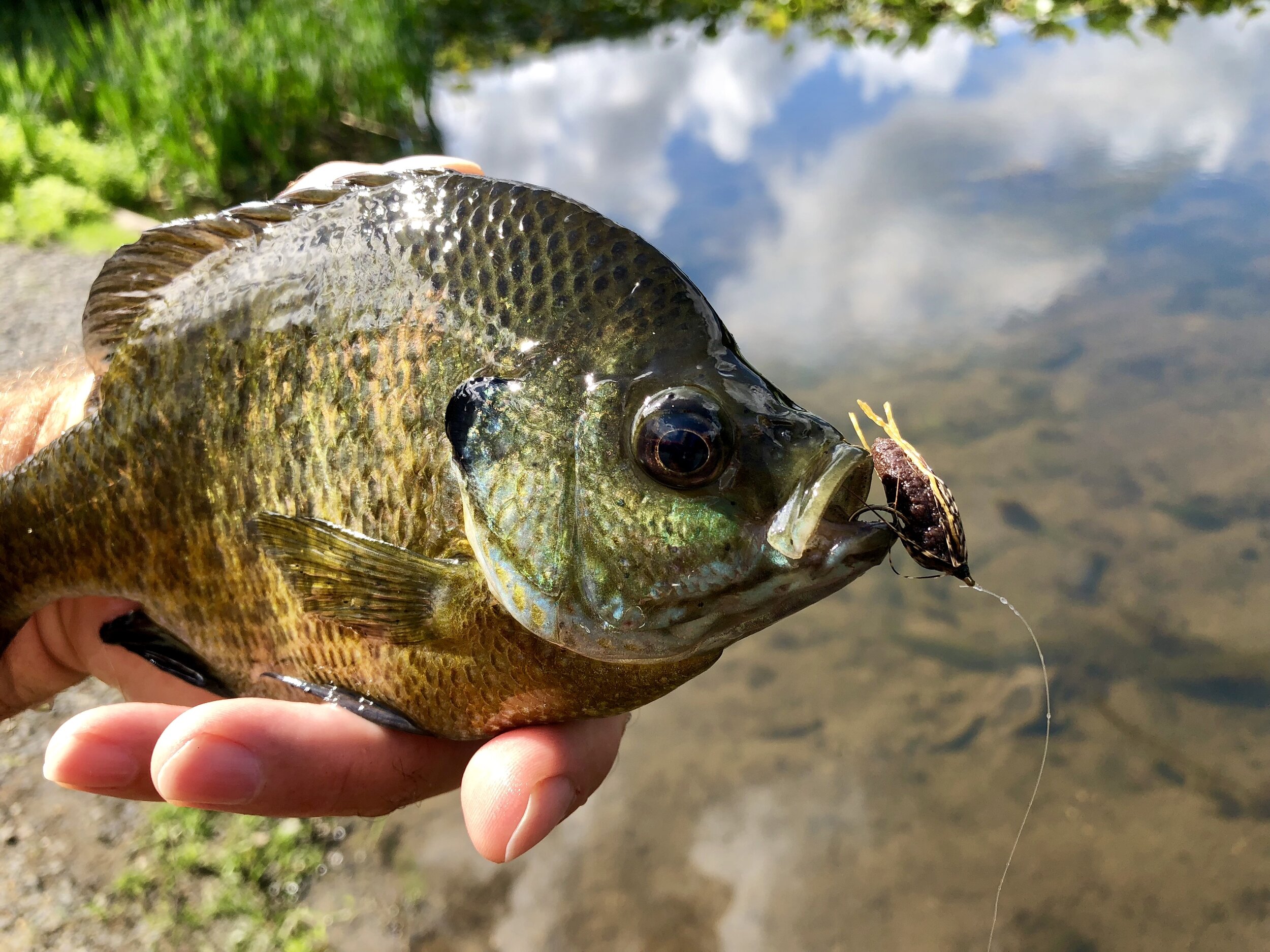"Mop Flies," as they are generically called, are loved by some anglers and shunned by others. This love-hate relationship has a lot to do with their effectiveness. The purist, dry fly anglers, turn their noses up to this ugly fly because it can be nothing more than a piece of your bath mat lashed to a hook shank. Deep down, the thing they hate most about the fly is that it will likely catch more fish than their exquisitely tied Catskill style dry fly!
I tie the creature is a range of natural colors as well as some brighter attractor hues.
The Creature is my version of a mop-style fly that I designed for fishing in warm water. The fly received its name from an anonymous fisherman I was chatting with at one of my local lakes. We were comparing notes on the day's fishing, and as conversations like these often go, we shared the contents of our fly boxes. He looked into my fly box, gestured towards a particular pattern, and exclaimed: "Let me take a closer look at that creature!" He asked what I called the fly, and I stated: "It does not have a name, but I think you just gave it one." So from that day forward, I have been calling this mop style pattern "The Creature."
The Creature is a mouthful for most bluegill.
Before mop flies became the scorn of the fly fishing community, they were the "secret flies" of some competition anglers. Eventually, the secret leaked out, and the rest is history. These patterns likely imitated crane fly larva in the trout streams where these anglers fished. I designed the Creature to mimic a wide range of warmwater aquatic organisms. Small baitfish and tadpoles come to mind, but fish are likely to take this pattern for a larger dragonfly nymph. A full-grown dragonfly nymph is just about the size of the Creature. The slow retrieve I like to fish this pattern with probably imitates that insect more than anything else.
The Mop Dragon is a more realistic dragonfly nymph imitation.
One of my best uses of mop material is in my Mop Dragon pattern. The Mop Dragon is a realistic-looking dragonfly larva that uses mop material as an extended body. While not difficult to tie nor incredibly time-consuming, I am always looking to simplify things and save time at the vise. Saving time is what drove me to create The Creature.
A dark bluegill with an even darker Creature in its jaw.
I can not dispute a simple mop fly's effectiveness, but as a fly tier, I prefer something slightly more elaborate than a bath mat on a hook. If for no other reason than feeling like I created something worthwhile for the time spent behind the vise. Am I a purist? Not by any means. I may, however, have a slight amount of fly-tying snobbery flowing through my veins.
Bass have a soft spot for the Creature as well.
The Creature takes a few different fish catching elements like rubber legs, soft hackle, and the ubiquitous mop material and combines them to make a fish catching machine. Will a simple strand of mop material lashed to a hook catch fish? Maybe, but I feel better using something that at least looks like a fly.
You can tie the fly with just three materials; a mop, a sizeable soft hackle feather, and some leg material. I tend to stick with more natural tones like tan, brown, olive, and black for the mop. But, if you looked hard enough, you would find a couple of garishly colored Creatures in chartreuse, orange, yellow, purple, and red, tucked in the corners of my fly box.
For the hackle, I like the larger body feathers of a ruffled grouse, body feathers of hen or cock pheasant, or the body feathers from one of my hens in my backyard flock.
The large mottled feathers on this hen are an example of a perfect feather for tying Creatures.
In regards to the rubber legs, I prefer silicon to round rubber. The silicon Bug Legs hold up better to the teeth of smaller bluegills that love to grab this fly by the legs and swim around with it, and silicon will not break down as quickly as the round rubber if, by the off chance, the fly sits unused in a fly box for a couple of seasons.
Our Bug Legs are the leg material of choice for tying Creatures
I often add a contrasting hot spot of dubbing over the tie-in point for the legs. While this feature was absent on the earlier versions of this fly, it has become a standard part of all the Creatures I tie these days. The jury is still out on whether or not the fish feel this extra step is needed. So I leave the dubbing up to you.
The hot spot is clearly visible on the Creature pattern that caught this small bass.
Before I lash down the mop fiber, I cover the hook shank with thread wraps and coat those wraps with a thin layer of super glue. The use of superglue will adhere the mop body to the hook shank a little more securely without building up thread wraps to hold the material in place.
Solarez Bone Dry or the new and improved Bone Dry Plus are perfect for protecting thread wraps and giving a smooth high gloss finish to the heads of your flies.
I also coat the thread wraps at the head with Solrez Bone Dry UV Resin. Bone Dry is a truly tack-free resin that creates a great-looking head on the fly. However, I use it because it makes the head of the fly extraordinarily durable and less likely to be damaged by a pair of forceps as you extract the fly from the mouths of several dozen bluegills.
Fish tend to hold on to mop flies a little longer making it easy to set the hook.
One of the great things about flies tied with mop material is that the fish tend to hold on to the fly a little longer. It is especially true once a few fish have chewed on the fly. Maybe the mop absorbs some scent of the fish, but I find after the fly has caught a few fish, bluegill will grab the fly and swim off with it. Unfortunately, this often results in the fish swallowing the fly, so barbless hooks are a must if you intend to release fish.
I tie this fly on a size 8 Mustad 3366; smaller fish cannot fit this fly into their mouths because of its size. This larger fly allows me to concentrate my efforts on bigger fish. Missed hits are commonplace as smaller fish will often have a go at the fly. However, large bluegills take this fly with a vengeance, with rock-solid takes that usually end up with a deeply hooked fish.
There will always be a few Creatures in my panfish fly boxes!
Pattern Recipe: The Creature
Thread: 6/0 Semperfli Classic Waxed Thread in the color of choice
Hook: Mustad 3366 #8
Body: Mop material in the color of choice
Legs: Bug Legs
Hackle: Large body feather from grouse, pheasant, or hen chicken
Optional: Dubbing in the color of choice over mop tie-in area (brushed out over the body)
As always the materials to tie this fly pattern can be found in our shop! Please consider supporting us the next time you need to purchase materials for your fly-tying endeavors!

